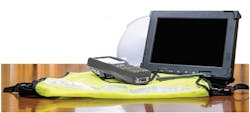Computerized maintenance management systems (CMMS) are transforming the large and complex maintenance operations of every industry. A CMMS solution is an advanced application designed to manage and monitor every aspect of maintenance operations to make the day-to-day job of facility managers easier and more efficient. It empowers organizations to manage and monitor everything from work orders and inventory levels to preventive maintenance and workflow.
With the proliferation of cloud computing and the Internet of Things, businesses of every size and scope are flocking to a CMMS for improved efficiency and cost savings. From restaurants and retail chains to municipal facilities and malls, every industry is making the most of a CMMS solution for smarter maintenance.
The need for CMMS
Maintenance departments often face costly repairs and emergency replacements that disrupt operations. These repairs and replacements can be prevented with an efficient CMMS solution that offers end-to-end visibility into equipment uptime, workflow management and maintenance costs.
Installations that involve customization and deploy on-premise servers can benefit from a powerful CMMS, which keeps equipment up and running smoothly by identifying bottlenecks instantly and preventing maintenance problems before they disrupt the production process.
A CMMS facilitates informed decision making, gives real-time access to mission-critical maintenance information, extends the service life of equipment, reduces the cost of repairs and replacements, and accelerates responsiveness to work orders.
Benefits of a CMMS for 5 verticals
CMMSs provide advantages for multiple industries, including:
- Allowing hotels to replace lighting before it goes out
- Ensuring that hospital life support systems work properly
- Compiling and reporting school fire alarm performance data
- Keeping airplanes up to date and running on time
CMMS solutions allow industries worldwide to create safer, more efficient operations. Five process industry sectors may benefit most from the operational improvement of using a CMMS:
1. Manufacturing
Manufacturing involves significant wear and tear, which means work orders must be generated when parts and replacements are needed. To gain maximum returns on investment, tracking an asset’s life cycle is required for maximized uptime and productivity. Investments in plant equipment and the expenses for preventive maintenance determine the competitiveness of a plant. A CMMS automates everything – from work orders and asset management to reporting and vendor management. This automation increases operational efficiency and helps the business achieve its goals.
2. Oil & gas
In the turbulent environment of a wellhead, ensuring that everything remains organized, even with constant movement and activity, is paramount. The maintenance team needs to verify that everything – from the equipment and fleet to the final product and essential assets – is in top shape.
A CMMS captures every detail at a centralized location, which can be accessed easily by multiple users from any device to prevent unplanned downtime and other delays. It streamlines the day-to-day maintenance tasks while ensuring accurate recordkeeping. It keeps constant track of metrics that have a profound impact on the equipment’s performance, generating greater revenue as projects expand.
Mobile CMMS
Using a mobile CMMS empowers maintenance teams to:
- Schedule, allocate and accomplish work orders faster and with complete precision
- Manage the spare parts inventory efficiently so repairs are performed quickly
- Keep constant track of equipment parts, maintenance procedures and inventory levels to avoid delays and interruptions
- Reduce machine downtime that leads to lost revenue
- Ensure strict adherence to safety regulations and meeting safety standards to prevent workplace hazards and machine failures
- Minimize overtime by saving the time traditionally wasted on searching for information in folders and files
3. Food & beverage
The food and beverage industry must comply with stringent regulatory requirements. Meeting tough standards during strict audits requires those in the food and beverage industry to keep careful and constant track of every step in the production process. Timely maintenance plays a pivotal role in keeping production lines fully functional around the clock. A CMMS is fully loaded to accomplish everything needed to prevent downtime and other problems. It provides accurate reports on work orders, inventory levels, maintenance schedules and allocated funds for operations without any interruption.
4. Energy
Prasit Rodphan/iStock
Longevity, high-performance and uptime are the top concerns of any energy-intensive facility. A CMMS stores all the information on a centralized dashboard so managers can stay on top of work orders, repair costs, availability of spare parts and other maintenance functions. From condition monitoring and compliance to document management and preventive maintenance, organizations can keep the pulse of each activity to ensure that operations run safely and effectively.
5. Municipal facilities
A CMMS improves responsiveness to infrastructure failures and equipment breakdowns by updating the team about inspection schedules and preventive maintenance. Municipalities use CMMS to manage workflows, prevent critical breakdowns, ensure the timely performance of maintenance tasks, and implement timely planning and scheduling. This improves transparency, promotes accountability and aids in achieving regulatory compliance.
Government and private organizations use asset management and employ a CMMS solution to streamline operations, save time, lower maintenance costs and improve work efficiency. A CMMS improves transparency, ensures the accurate measurement of performance, enhances compliance standards and facilitates precise adherence to standard operating procedures. A ready-to-implement, easy-to-use CMMS solution is making predictive and preventive maintenance safer and smarter by leveraging the agility and accessibility of mobile technology. Mobile CMMS technology is gradually becoming a must-have in every industry.
Mobile CMMS is the future
By enabling daily engagement in the blink of an eye across the globe, mobile technology has become the undisputed king of communication, and the same stands true for businesses. A mobilized CMMS is the best solution for organizations in which employees are always on the go or for operations in remote locations. The power and portability of a mobile CMMS allow technicians to stay on their toes and save tremendous time and cost.
Below are seven ways mobile CMMSs have revolutionized the way technicians work and why this technology will have a long life in the process industries:
1. Real-time access to information
One of the biggest benefits of a mobile CMMS is its portability, which facilitates instant access to work orders even when technicians are in the field. For maintenance technicians who are always in the field, this technology will improve efficiency and reduce downtime. A mobile CMMS solution enables instant notifications for upcoming preventive maintenance and work orders to ensure that equipment operates efficiently and effectively.
2. Improved responsiveness
With a mobile CMMS, workers can easily access pending work orders, track assets and browse through the inventory from any device. A mobile version keeps technicians on top of equipment performance to prevent breakdowns. It eliminates the possibility of delays and makes completing all the reactive repairs and replacements on time fast and easy.
3. Instant communication
With on-the-spot communication from any device, managing workflow and accelerating responsiveness during emergencies becomes easy. It keeps the entire crew updated and informed at all times so operations remain up and running around the clock. With end-to-end visibility into the entire maintenance operation, closing work orders on time while ensuring regulatory compliance is simplified. Real-time reporting of what went wrong and how soon the maintenance or repairs will be accomplished occurs seamlessly and quickly, minimizing the chances of important details being missed or forgotten.
4. Reduced transit time
Yamac Beyter/iStock
With a mobile CMMS, photos are easily shared and videos are easily uploaded from any device. The maintenance team is always aware of the actual issue – saving time, improving accuracy and increasing work efficiency because every member knows exactly what needs to be done. The portability of a CMMS plays a crucial role in preventing breakdowns because technicians always have instant access to critical information.
5. Enhanced precision
A mobile CMMS solution empowers maintenance technicians to shift the focus from reactive problem solving to improving uptime and reducing errors. It eliminates paperwork so that technicians can concentrate on optimizing equipment performance and ensuring that operations remain on track without spending hours recording work and searching for old records.
6. Faster workflow
When a mobile CMMS solution is paired with barcode scanning, it simplifies inventory management. This enables the technicians to act immediately and find replacement parts and assets in an instant. It automates the workflow for faster turnaround and boosts overall productivity. Since a CMMS does not keep the technician tied to a desk, accuracy is improved and errors are reduced.
7. Improved coordination
A mobile solution allows technicians to place orders from any location. When they can connect with vendors at any time without reaching out to a PC to look for vendor information, they save time and ensure the receipt of the correct parts at the earliest time possible. This reduces overall downtime and prevents errors.
Scheduled maintenance is the key to performance optimization, and a mobile CMMS solution helps keep up with standardized procedures even with massive inventory levels. It allows for the management and monitoring of everything – including service contracts, specific work orders and inventory levels – by making information readily available at any location. Overcome many maintenance issues by streamlining predictive and preventive maintenance schedules on the spot with this solution that keeps the entire maintenance team informed and on track.
Lindsey Walker is marketing manager for NEXGEN Asset Management. With a bachelor’s degree in business information management, she excels at business development, project management and asset management. Walker’s passion for writing allows her to find time to share her knowledge on asset management, geographic information systems, software implementation, training curriculum development and similar topics.




